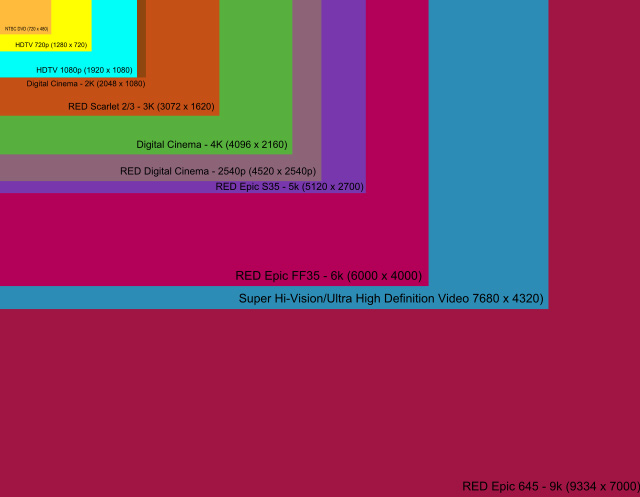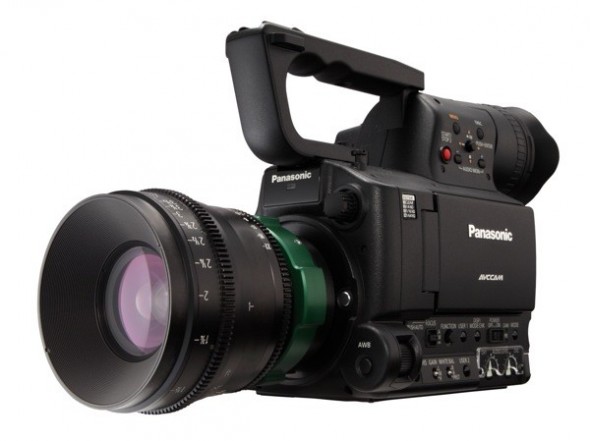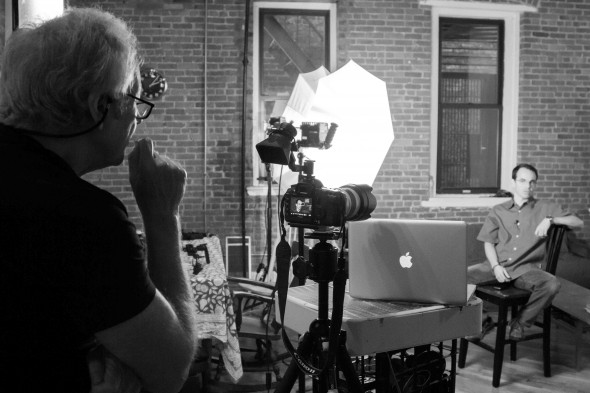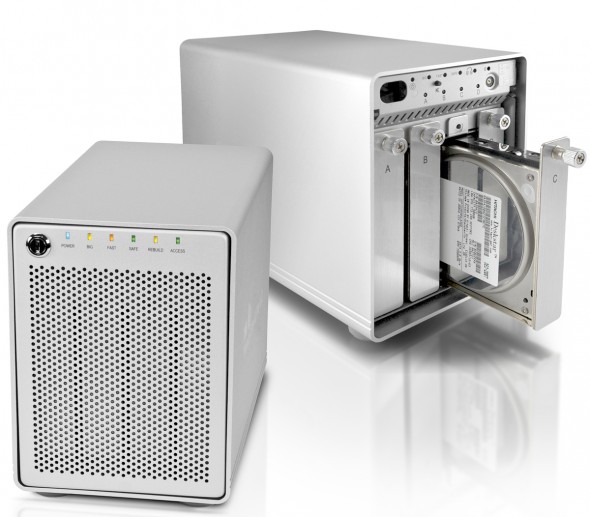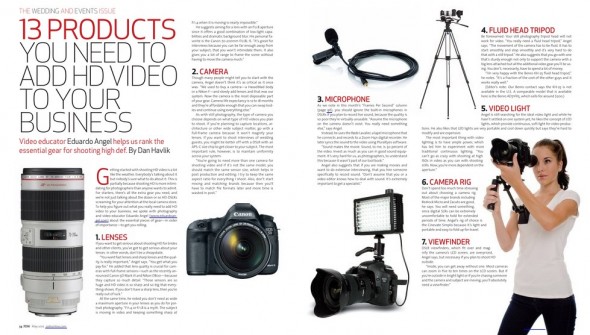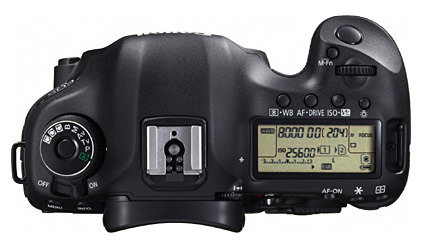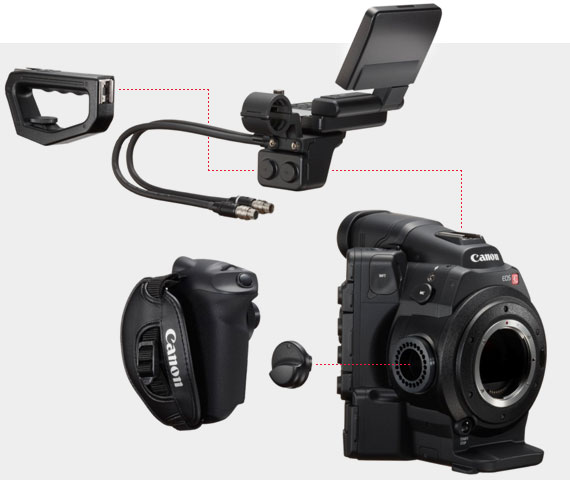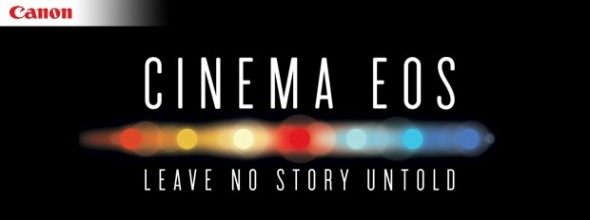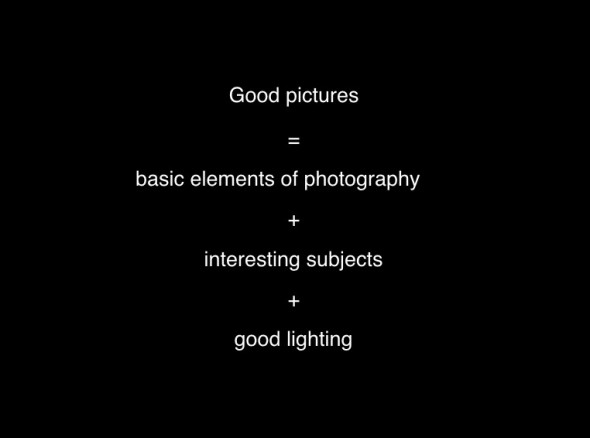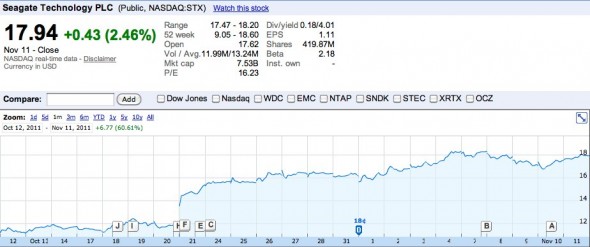Video
H.265: A New Standard for Digital Cinema?
A new video codec is expected to replace H.264 as early as next year. H.264 is one of the most common formats for recording, compressing, and distributing high-definition video, not in small part because it is the codec found on several HDSLR systems such as Canon’s EOS 5D Mark III. Another big advantage is that it is currently supported by for most video sharing websites like YouTube and Vimeo. Additionally, runs natively in both Lightroom 4 and Adobe Premiere Pro CS6, which dramatically decreases the time wasted transcoding and rendering files.
But, apparently there is (or technically, will be) a new kid on the block. The Moving Picture Experts Group (MPEG) and the Video Coding Experts Group (VCEG) are teaming up and plan to release H.264’s successor as early as January 2013. The new kid’s name will likely be H.265 or MPEG-H Part 2.
Just how much more efficient will H.265 be? Well, H.265 is expected to provide a significant improvement in data transmission and streaming efficiency compared to H.264. It will have almost twice the amount of compression ratio from for a similar quality level. This means that I’ll need to buy less memory cards, and less external hard drives. Both will make my accountant really happy. Below is the only video test comparing H.264 and H.265 we were able to find. It was performed on an Android tablet by Qualcomm, a San Diego-based chip-maker that is listed as a member of the international standards group developing H.265.
H.265 will be designed to support all new and current streaming technologies including devices working at 4K and Ultra HDTV (also known as 8K or 4320p) resolutions. Did you know that Ultra HDTV definition contains about 16 times the amount of pixels that are present in a 1080p video stream? That’s kinda insane! Check out the chart below to see things in perspective.
The H.265 codec sounds promising, but (there’s always a but) it will have to fight for widespread implementation with another codec called VP8. This format was purchased by Google two years ago and was released it as a royalty-free alternative under the Creative Commons license. Nvidia (Qualcomm’s main competitor) has built VP8 decoding support into its newer Tegra 3 chips alongside H.264 support, and several companies including Skype have adopted VP8 as their preferred format. Adobe also announced that the Flash Player will support VP8 playback in a future release. Who will win? Let’s wait and see.
Video
The Sounds of Aronofsky.
The sounds of Darren Aronofsky, including fantastic movies like Black Swan (2010), Requiem for a Dream (2000), Pi (1998), and The Fountain (2006). Simply brilliant.
Video
NAB 2012 wrap-up.
• Blackmagic announced a hard-to-believe camera featuring a 2.5K image sensor, 13 stops of dynamic range, built-in SSD recorder, popular open standard uncompressed RAW and compressed file formats, compatibility with quality EF and ZF mount lenses, and LCD touchscreen monitoring.
• Adobe Premiere Pro CS6 is out with and enhanced 64-bit playback engine that can handle 5K resolutions, and higher, new trimming options, compatibility with Mac touchpad gestures, a Warp Stabilizer that was previously confined to After Effects, and expanded multicam editing for more than four cameras. Taking a page from its sister app, “the audio oriented Audition, Premiere Pro CS6 offers a redesigned and more functional audio mixer. Adobe also introduced SpeedGrade, a film finishing and color grading app, and Prelude, for ingesting, logging, and transcoding.
• Autodesk announced Smoke 2013 for the Mac, a new version of what the company is now calling video editing software and at users of Apple’s Final Cut Pro or Avid Media Composer who want high-end editing and finishing tools in one app. The new price is “only” $3495, down from $14,995 for the 2012 version.
• Panasonic announced a bittersweet firmware update for the AG-AF100 that provides 1080 50p and 60p modes. That’s the sweet part. The bitter? They want users to pay $300 for the upgrade.
• Canon announced the 1D C ($15,000), which has the same chassis and still shooting features of the EOS-1D X ($6,800), and captures 4096 x 2160 8-bit 4:2:2 video to a CF card at 24 fps. Unlike the X, the C swaps a headphone jack for the X’s PC sync.
• The higher-end Canon EOS C500 ($30,000) offers the same ISO range as the C300 (320-20,000) and requires a dedicated external recorder, but captures in two full-RAW flavors: 4096 x 2960 (for motion picture), and 3840 x 2160 (for 4K TV). Both of these modes offer 10-bit 4:4:4 at 60 frames-per-second. There are two additional RAW option, 4096 x 1080 or 3840 x 1080 resolutions, which are also 10-bit 4:4:4, but at 120 fps. The camera also offers
Video
Video Essentials and Video Editing for photographers at SVA.
PDN Magazine recently published what we consider the “13 Products you need to add HD Video to your business.” (You might need the password “tutorials” to download the file.) The article is also available on PDN’s May print issue. If you are new to the world of Video, this list is a great place to start.
During the summer we will be offering two new workshops at the School of Visual Arts (SVA) in New York City: a 2-day “Video Essentials for Photographers” and a 1-day “Video Editing for Photographers” using Adobe Premiere Pro. We hope to see you there!
Video
Reliable RAID Systems, an overview.
Professional photographers and filmmakers, are always (and should be) concerned with storage devices, such as hard drives to create reliable backups and efficient workflows. All hard drives will fail eventually, that is why using RAID (Redundant Array of Inexpensive Disks) systems is often our recommended strategy. A RAID is a set of connected hard drives designed to store digital files and information in a much more reliable manner. Most current RAID units can also monitor a Hard Drives’ system health, fan, and power supply and warn users when there’s a potential failure.
There are several different levels at which a RAID system can be configured. In the photo and video industry, we generally use RAID levels 0, 1, 5, and 6. One way to remember them is: Fastest (0), Mirror (1), Safe (5), and Safest (6).
Interested in learning more about RAID systems? Then read this article we recently wrote for Canon’s Digital Learning Center to better understand how they work, their differences on performance, compatibility and size. Don’t wait until it’s too late to establish a good backup strategy! If you need help, don’t hesitate to contact us.
Video
Conversations with Friends.
For this week’s “Conversations with Friends,” (Episode 7), we continue our dialogue with Ted Kawalerski, professional photographer and director, about his own transition from still photography to documentary and corporate filmmaking, and the challenges involved.
Ted also shares more light on his upcoming Family Life Academy video project, located in the South Bronx in New York City as well as his views on retirement.
As always, please share with us your feedback and thoughts.
Video
Catching up with the coolest tech news. Summary.
I’ve been on the road for the past 2 weeks, with very limited internet access. Today, I finally had some time to catch up with the latest technology news (1683 articles and 268 emails). These are, in my opinion, the most interesting and relevant announcements:
• Filmmaker Jeff Desom took Alfred Hitchcock’s famous 1954 film “Rear Window” and turned it into a single panoramic time-lapse video.
Two years ago I set up my camera to take a picture every 15 seconds for 36 hour and edited 698 still images into a 29-second video.
• Recently I was interviewed by PDN about the “13 Products you need to add HD Video to your business.” Do you agree or disagree? Did we miss something? We would love to hear your comments below. The article is also available on PDN’s May print issue.
• Blurb posted a cool article about how we use the Book Module on Adobe Lightroom 4. If you are interested in exploring this option don’t miss one of our upcoming seminars. Here’s the sample book (about wine!) we created.
click here to continue (more…)
Photography
Get set for AIPAD. Starts today.
If you have ever been to an AIPAD show in New York City, then you know that ‘tis the season to be excited for the 32nd anniversary of this once-a-year photography showcase.
Starting today and until April 1, 2012, photographers, art dealers, hobbyists and international art enthusiasts will gather together for the latest in art photography at the Association of International Photography Art Dealer’s (AIPAD) Photography Show, returning to the Park Avenue Armory in the Upper west side.
The Armory was built as a military facility and designed by the world’s leading artists and architects in 1861, including Charles W/ Clinton (later a partner of Clinton & Russel), Louis Comfort Tiffany, Stanford White Herter Brother, Pottier & Stymus, and architects of the Astor Hotel. The main hall, measures 55,000 square feet…that is a lot of room for a gallery, wouldn’t you say? It remains as one of the few unimpeded spaces remaining in New York.
This year is going to be huge, with 75 of the world’s leading art galleries contributing all different kinds of photographic work including contemporary, modern, abstract, 19th century, photo-based art, digital video…. you name it!
In addition to the amazing variety of artwork that you will encounter, there are also panel discussions and seminars from some of the world’s most influential photographers and curators including a conversation between Dutch photographer, Rineke Djisktra and Jennifer Blessing, curator of photography at the Solomon R Guggenheim Museum.
“Highlights of this year’s photography exhibition include work by Julia Margaret Cameron, Ansel Adams, André Kertész and Henri Cartier-Bresson, as well as a variety of modern and contemporary showcases such as those of Linda McCartney and Karen Knorr and an exclusive exhibition by David Zwirner gallery of a new body of work by Philip-Lorca DiCorcia, in which he endeavours to find a balance between documentary and theatrically staged photography. There is also an exhibition of personal cards sent from photographers such as Lee Friedlander and Jerry Uelsmann.” Read the press release. to see more featured speakers and artists.
For only $40, you can get a four-day pass, or $25 for a one-day pass. Even better, students can pay $10 for a one-day pass. I would highly recommend this show to anyone who is in the least bit interested to understand past and present trends in photographic mediums.
For more details, visit www.aipad.com.
Video
Conversations with Friends.
On the sixth Episode of our “Conversations with Friends” we sat down with Ted Kawalerski, professional photographer and director, to talk about his transition from still photography to documentary and corporate filmmaking after a 35-year career.
Ted talked about finding great partners for his digital cinema projects, and shared with us some of the rewards and joys and technical frustrations he has discovered during his transition.
We discussed Ted’s upcoming Family Life Academy video project, the importance of sound, the video editor’s role, and storytelling. In fact, we covered so many interesting topics that we decided to edit Episode 6 as Part 1, and Episode 7 as Part 2.
For this Episode we used Rode Lavalier Mics and Ted mentioned his preference for Rode Shotgun mics.
To celebrate the Spring’s arrival, Eduardo enjoyed a “sparklingly mild and fruity” Paulaner Hefe-Weissbier natural wheat beer with a “delicate yeast flavour, gleaming orange colour, and uniform cloudiness.” Ted drank about a gallon of tap water.
Here are the links to Episode 05, and Episode 04.
Please add your comments below! Are you enjoying our Conversations? Did you learn something new today?
Video
Canon EOS 5D Mk III, 5D3, 5D Mark III has arrived.
Ok. Let’s start from the beginning: We are looking at a 22.3 Megapixels, Full Frame (36 x 24mm) CMOS sensor system, powered by a DIGIC 5+ processor. Check this article if you want to fully understand the differences between the DIGIC 4 processor on the 5D Mark II, and the new DIGIC 5+ on the 5D Mark III.
Some of the highlighted features include:
• Dual card slots (1 SD/SDHC/SDXC and 1 CF). Sorry, no XQD on this one. What is awesome about the dual cards is that you can a) record the same data to both cards, or b) record different file sizes or types to each card, or c) automatically switch to the second card when the first card is full. That’s great when shooting long interviews, or concerts, for example.
• HDR with +/- 3 stops
• Improvement in noise reduction by 2 stops
• Multiple exposure mode
• 63 zone dual metering system
• +/- 5 stops (the 5D Mark II has only 3 stops)
• iFCL metering system with a 63-zone dual-layer sensor
• File Formats: AVI, RAW, JPEG, H.264, MOV, MPEG-4
• Full HD video recording: 1080/30p, 24p, 25p; 720/60p, 50p; 480/60p, 50p
All the typical features are here: Minimum Shutter Speed (30 sec), Maximum Shutter Speed (1/8000 sec), 100% coverage viewfinder, etc, etc, etc. As expected, durability on the Magnesium Alloy chassis has been improved including a 150,000-cycles shutter, and water and dust additional resistance.
These are the specs that REALLY got my attention:
• It is now possible to check two images side-by-side for sharpness, exposure, etc at different aspect ratios (1:1, 4:3, 16:9) with the new “Comparative Playback” function.
• There’s a Q button that will process RAW to JPG on camera.
• The new camera shares the same exact 61-point High Density Reticular AF system found in the EOS 1D-X (for half the price).
• There’s an iPod-like button to make changes in the movie mode without adding noise to the clips. Smart!
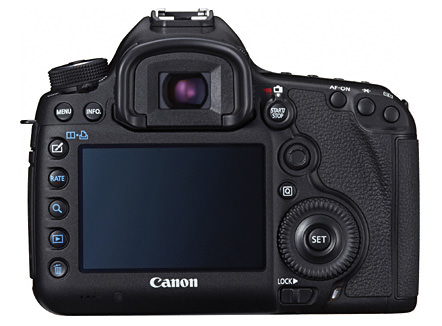
• The 5D Mark III uses the same batteries (LP-E6) as the 7D and 60D.
• The ISO war keeps getting better. The Mark III offers ISO 100-25600 (expandable up to ISO 102,400) for stills, and 100-12800 (up to ISO 25,600) for video. Wow! Now we really could use an iPad as a Key Light!
Here’s an interesting set of high-res JPEGs samples shot at ISO 50 to 102,800. The test was performed under low level halogen lights, which are perhaps the most challenging to digital sensors and noise reduction systems.
Video Features.
There are several serious improvements on this front:
•There are a couple of new video Modes: “Silent and Low Vibration,” but I don’t recall seeing them on the prototype I tested.
• The video resolution is Full HD (1920×1080), and the video format is the same H.264, which I personally love because it runs natively on Adobe Premiere Pro and Lightroom 4, and plays extremely well with online sharing platforms like Vimeo and YouTube.
• The recording buffer has been extended from 12 minutes to 29 minutes and 59 seconds. The 4GB limit is finally over.
• Following Nikon’s D800 improvement, we now have a 3.5mm headphone jack for live audio monitoring and a Wind Filter. Other ports include USB 2, HDMI, Mic Input, and Wireless.
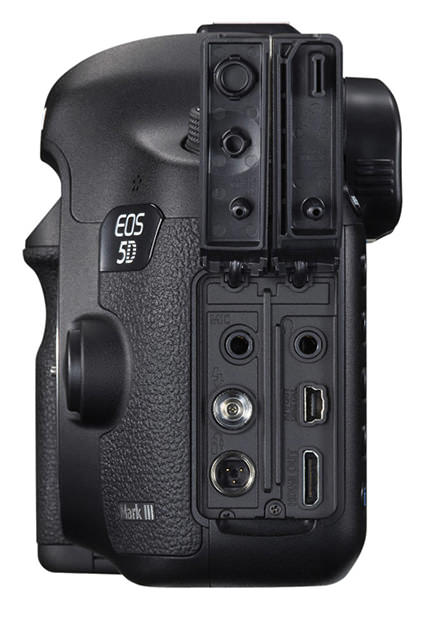
• The LCD screen is virtually the same 3.2″ 1.04 million as the Nikon’s D800. With a screen this size photographers are out of excuses for not using Histograms the way they should.
• There’s a built-in info menu while shooting video, which comes super handy to quickly check important settings like White Balance, Resolution, ISO, Picture Style, etc.
Regarding audio, the changes are pretty exciting:
“The camera includes manual audio level control with 64 levels, adjustable both before and during movie recording. There is also an automatic audio level setting, or sound recording can be turned off entirely. A wind filter is also included. Sound can be recorded either through the internal monaural microphone or via an optional external microphone through the stereo mic input.”
—Click to continue (more…)
Video
Meet Canon’s C300, in person.
This week (January 25th) Abel Cine New York is showing Canon’s brand new EOS C300. Abel is also hosting a similar event next month (February 16th) in Los Angeles. More than just another cool camera, the C300 systems confirms Canon’s commitment to the filmmaking industry. The systems comes in two flavors, one with EF mount (EOS C300) which takes your good ol’ Canon still lenses, and another one (C300 PL) with a PL mount. To learn more about this system and what it means for photographers shooting video read my previous post.
Also this week, Canon is showing in Chicago a series of short films shot with the C300, as well as “Behind the Scenes” interviews with the directors and crew members.
Video
Exclusive Canon Cinema EOS screening.
On January 26, Canon will be hosting “an exclusive Cinema EOS Event” in Chicago. They will present a series of short movies shot with the brand new, game changing EOS C300 camera, as well as “Behind the Scenes” interviews with the directors and crew members. Canon’s amazing technical staff will be available to answer all your geeky questions.
There will be two screenings (morning and afternoon), and registration is required. Please share your experience with us if you attend.
Video
What makes a good picture?
“Probably the only reason I would advise someone to attend film school today is because it is an opportunity to discover all kinds of films that you will never be able to see in theaters.” Bernardo Bertolucci.
What makes a good picture? Actually, it is not that hard to define what a good photograph is. We start with basic elements of photography like exposure, composition, and texture, then we add interesting subjects, and then we add good lighting, which is essential. That’s it! If we understand the basic elements of photography, find interesting subjects, and have good lighting we can make good pictures.
Now, what makes a good movie? This one is a bit trickier. A good movie has all the elements that define a good picture, but now we need to add good stories, and on top of that we absolutely and definitively need to have good sound.
In essence, the biggest difference between shooting stills and motion is that with stills we are freezing moments, we are going for that perfect instant in time. In motion, we have many sequences of frames, and we need to keep them connected with dialog, composition, camera movement, color, and obviously, a great story.
Video
Same but different – Intro to Digital Cinema.
As a professional photographer, transitioning into the HDSLR Cinema world for the past 3 years has been a fascinating journey. I would like to share the five main similarities and five main differences I have encountered. Read through, I can guarantee it will save you some time.
Similarities
• White balance. Think Jpg. You can tweak the White Balance in post, but you are very limited to what you can do. Instead of using Auto White Balance, set a specific color temperature (5200K for example), especially if shooting with more than one camera.
• Exposure is very critical. Pay special attention to the highlights. It is time to use again that good old Light Meter or get one specifically designed for HDSLR shooters like Sekonic’s L-308DC. Like White Balance, do your best to get it right on camera, not in post.
• Camera Settings. We are still using ISO, aperture, and shutter, but because of the frame rate, the shutter is not really a variable factor anymore. Now, we also need to add fps (frames per second), picture styles, and other interesting things to the mix.
• Composition. We go back to the basics. Rule of thirds, symmetry and patterns, texture, depth of field, viewpoint, and cropping. Luckily, that has not changed. If you have a good eye, you are good.
• Lighting. All cameras are light-tight boxes that admit controlled light only through a lens. Just because we can push sensors to 25,000 ISO does not mean you are telling a story with light. You need to light.
Differences
• Lighting. Wait! Wasn’t this one of the similarities? Yes, it is also a big difference. Remember strobes? They turned into hot lights and continuous lights. Also, keep in mind that now the camera moves, and the light should work for several angles.
Video
Why Hard Drive prices are going (way) up.
Approximately 65% off all hard drives are made in Thailand; another 20% have components made there as well. A single facility in Bang Pa-In owned by Western Digital produces one-quarter of the world’s supply of “sliders,” an integral part of hard-disk drives.
Since July’s flood, I have received notifications that prices have an immediate price increase for external hard drives but it will be less noticeable for laptops and desktop computers due weakened demand. According to the New York Times, those companies whose facilities were not damaged, such as Seagate, might see an increase in profit margin to about 30 percent from about 20 percent before the floods. Actually, Seagate’s share price has increased 60% in one month!
If you have been planning on getting a new hard drive, buy it now. If you are shooting HDSLR video or are planning to start anytime soon, you will need a faster, bigger hard drive, buy it now.
Video
Is this the future of Video editing?
Adobe just released some “early-stage technology ideas” during the recent Adobe MAX conference, and by far my favorite is “Video Meshes” which basically is a new way to edit videos that includes the ability to create 3D fly-throughs of 2D videos, AND change focus and depth of field.
Imagine the possibilities: Lightroom meets Premiere
meets Video Meshes meets the recently acquired Iridas. Iridas, just in case you missed it, is a leader in high-performance tools for digital color grading and enhancement of professional film and video content, including stereoscopic technology. Adobe is getting really serious about these things lately.
How long will it take for this to develop into a real product? Any guess?
I am also impressed with the gazillion of Cloud apps they have announced lately. But that’s another post for another day.
